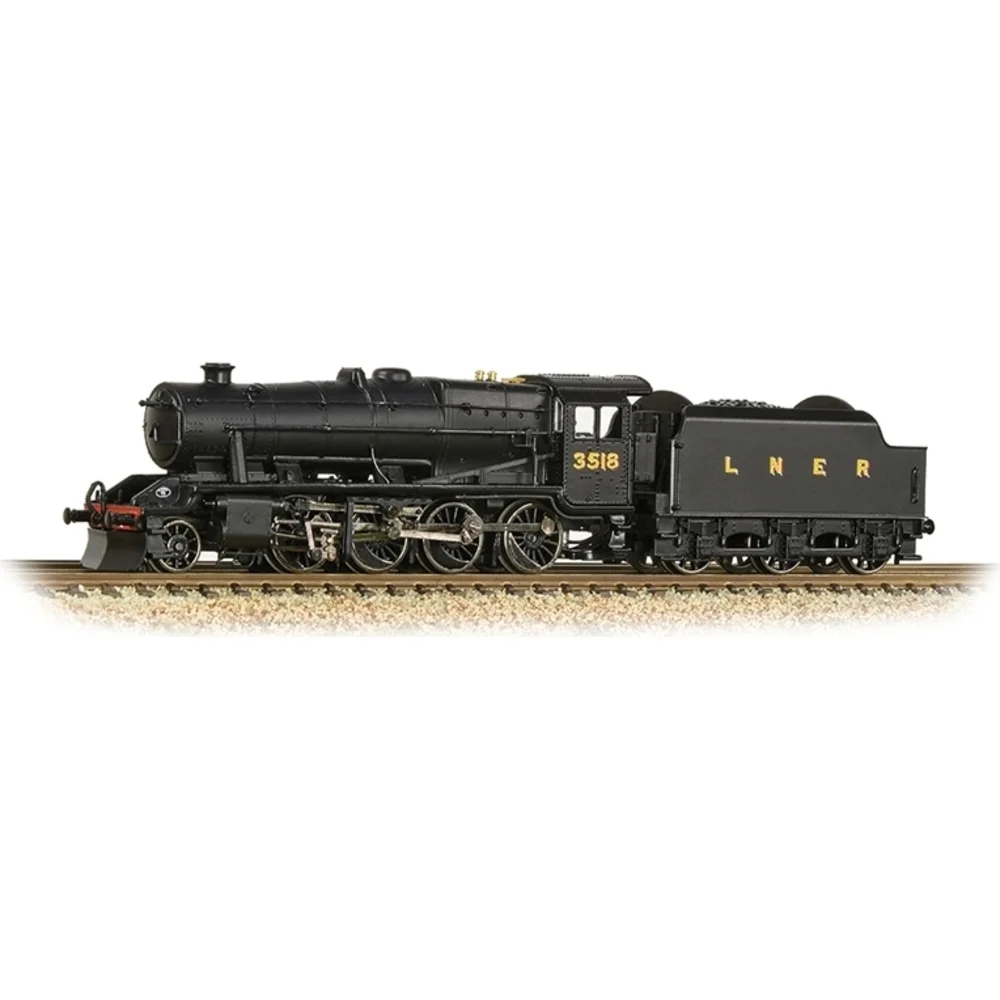Graham Farish 372-160
London, Midland & Scottish Railway Stanier Class 8F 3506 London & North Eastern Railway Black
Class & Prototype
- Class: London, Midland & Scottish Railway Stanier Class 8F
- Traction: Steam
- Built: 1935-1946
- Total Built: 852
- Running Number: 3506
The LMS Stanier Class 8F was Britain's most successful freight locomotive design, with 852 examples built between 1935-1946. Designed by Sir William Stanier to replace the LMS's inadequate freight fleet, these robust 2-8-0 locomotives featured 18½" x 28" cylinders, 225 psi boiler pressure, and 32,440 lbf tractive effort. Selected as Britain's standard WW2 freight locomotive, 8Fs served globally in Egypt, Iran, Turkey, and Palestine, with many remaining overseas permanently. On home metals, they handled 1,000-ton coal trains until steam's end in 1968. Eight locomotives survive in preservation, while modern models from Hornby and upcoming Bachmann releases ensure continued appeal for railway modellers seeking authentic British freight operations.
Operator & Livery
- Operator: London & North Eastern Railway
- Livery: Black
- Era: 3 - The big 4 – LMS, GWR, LNER & SR
The London & North Eastern Railway emerged in 1923 as Britain's second-largest railway company, combining seven major railways including the Great Northern, North Eastern, and Great Eastern into a 6,590-mile network stretching from London's four terminals to the Scottish Highlands. Despite serving economically challenged industrial regions, the LNER achieved worldwide recognition for engineering excellence and speed records that remain unbroken today.
Under Chief Mechanical Engineers Sir Nigel Gresley, Edward Thompson, and Arthur Peppercorn, the LNER developed revolutionary locomotive designs characterised by three-cylinder layouts and streamlined aesthetics. Gresley's masterpieces included the A1 Pacifics featuring Flying Scotsman and the legendary A4 class, culminating in Mallard's world steam speed record of 126 mph in 1938.
The company pioneered luxury express services including the Silver Jubilee and Coronation streamliners, whilst investing in forward-thinking electrification schemes and massive marshalling yards. Notable achievements included operating the complete East Coast Main Line, introducing Britain's first regular 400-mile non-stop service, and commissioning Eric Gill's iconic typography that influenced railway design for decades.
Nationalised in 1948, LNER locomotives continued serving British Railways until the 1960s, with some A4 Pacifics working Scottish expresses until 1966. Today, the LNER's engineering legacy thrives through extensive preservation, new-build projects like Tornado, and comprehensive model ranges covering every major class in all popular scales, making LNER subjects essential for discerning railway modellers seeking authentic British steam-age atmosphere.
The LNER plain black livery emerged as a practical economy measure that ultimately became the most widely applied colour scheme in the company's history. Initially introduced for goods engines in 1928 to reduce painting costs and labour time, this austere unlined black finish dispensed with decorative red lining whilst retaining the basic yellow lettering and "L N E R" tender markings. The livery reflected the harsh economic realities facing the LNER, particularly as the company served Britain's struggling industrial regions during the depression years of the 1930s.
The plain black scheme reached its zenith during World War II when, from 1941 onwards, austerity measures mandated that all locomotive classes receive unlined black paint regardless of their previous prestigious liveries. The transformation was dramatic – even the magnificent streamlined A4 Pacifics like Mallard and Flying Scotsman were painted in stark black, their elegant engineering unchanged but their glamorous appearance replaced by wartime utility. The austerity deepened in October 1943 when tender lettering was reduced from "L N E R" to simply "N E", halving material usage and painting time whilst creating one of the most recognisable images of Britain's wartime railways. For modellers, this livery authentically represents the challenging economic and wartime periods, offering dramatic visual impact and historical accuracy when depicting late 1920s freight operations, 1930s depression-era scenes, or the austere years of 1941-1947 when Britain's railways prioritised function over form.
